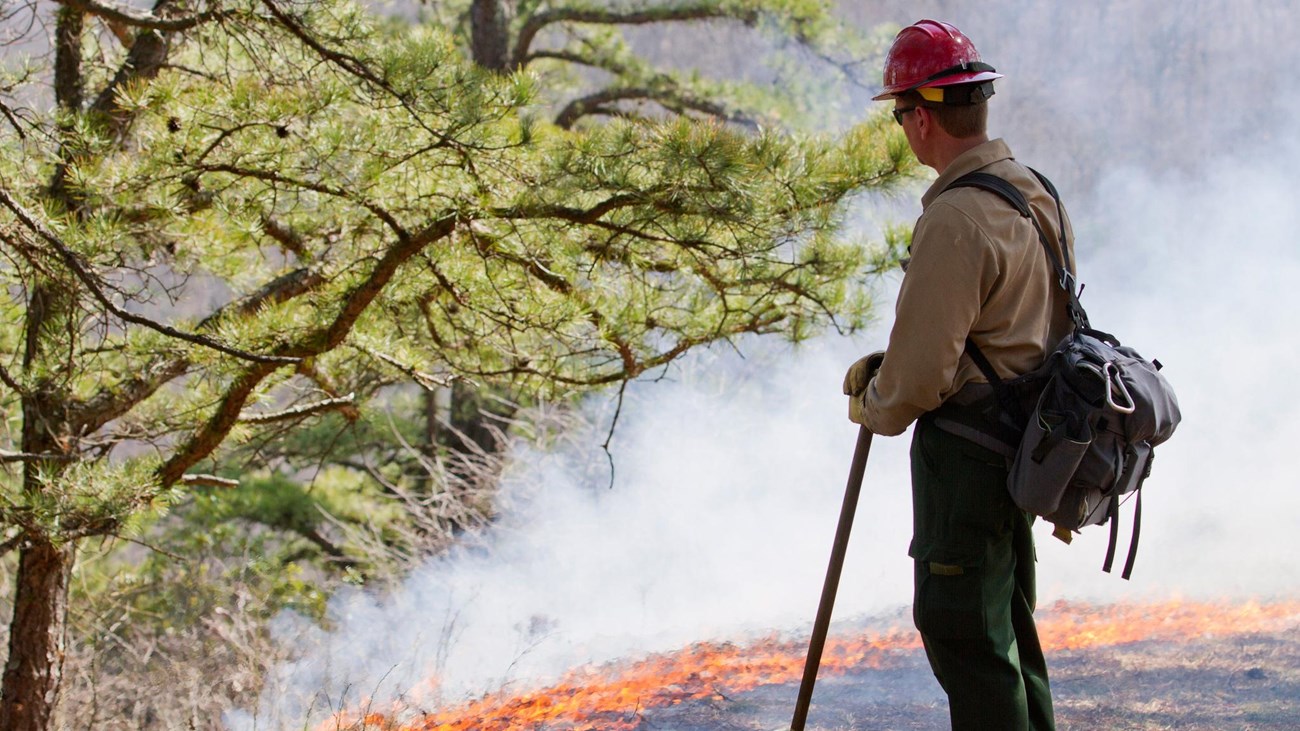|
Fire is a critical aspect of the growth of certain plant species and a normal part of Appalachian forest ecology. The pattern of fires characteristic of a natural region or ecosystem including variation in ignition, fire intensity, fire behavior, fire size, recurrence (or return) intervals, and ecological effects is called a fire regime. Shenandoah National Park is almost entirely forested with various eastern hardwood forest types. These forest types are considered to be in what is referred to as Natural Fire Regime 1B. Natural Fire Regime 1B refers to a forest that has infrequent, low-intensity surface fires with a recurrence interval of more than 25 years. Most of these fires are usually small in area. Lightning strikes on dry, exposed ridge tops and south facing slopes are common. If moisture conditions of tree crowns or leaves and woody material on the ground are sufficiently dry, fires will be started by the lightning strikes. In the 1900s, land managers worked hard to prevent forest fires from starting. Without this natural phenomenon, native species began to suffer and are now in danger of disappearing from our mountains forever. The Table Mountain Pine is an example of one such species. The Table Mountain Pine is only found in the Appalachians and often uses fire to help release its seeds. The cones are tightly closed and covered in resin. Fire melts that resin, allowing the seeds to fall out of the cone. Because of the lack of natural fire to help plant new trees, the Table Mountain Pine population has been in decline, and the species could soon be in danger without careful fire management. Disturbance and Succession 

Left image
Right image
Without fire many native species can be overshadowed by fast-growing, fire-sensitive tree species such as maple and poplar. Many species of oak trees, which have historically been a part of the Appalachian forest ecology and serve as a major food source for forest animals, need sun and space in order to thrive. Oaks have hard, thick bark that helps them survive fires. Without fire to clear the bushy understory, oak seedlings and oak saplings can't compete for sunlight. Flower species such as turkey beard, Heller's Blazing Star, mountain golden heather, and Peter's Mountain mallow are endangered, partially because the absence of fire in their environment has created intolerable growing conditions. Just as important, the plants that overload the forest in the absence of fire can become highly flammable fuel. This increases the risk of dangerously hot and fast-burning wildfires threatening local communities and important park resources, as well as posing safety issues for firefighters. Shenandoah is particularly at risk because of the large amount of dead wood on the forest floor from trees killed by gypsy moth, hemlock wooly adelgid, and severe storms. National Park Service managers now use prescribed burns to bring fire safely to the mountains. These are fires that are deliberately set by trained professionals to burn understory growth and create healthy forest environments. |
Last updated: August 26, 2022

